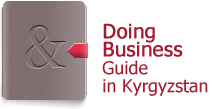Lessons Learned in Delivering the First PPP Project in Kyrgyzstan: What are the Key Elements of a Successful PPP Project?
Public-private partnership (the "PPP") is a long-term (up to 50 years) arrangement between the public and private partners whereby the public partner involves the private partner in the design, financing, construction, rehabilitation, reconstruction, or management of existing or new facilities, including infrastructure. Such a definition of the PPP is given in the Public-Private Partnership Act of the Kyrgyz Republic dated February 22, 2012 No. 7 (the "PPP Act 2012").
On August 15, 2017, for the first time in the history of Kyrgyzstan, the Kyrgyz Ministry of Health and the famous German company Fresenius Medical Care signed the public-private partnership agreement as part of the project on the organization of hemodialysis services in Bishkek, Osh and Jalal-Abad (the "Project"). The preparation, review and approval of the feasibility study report (the "FSR") and the Project by the Ministry of Health, the Ministry of Economy and other public authorities of the Kyrgyz Republic, the development and approval of tender documents, the holding of tender to select a private partner, and the singing of the PPP Agreement with the successful bidder took about 2 years.
Today, owing to the Project, there are 4 new dialysis centers opened in Bishkek, Osh and Jalal-Abad, equipped with the most modern equipment and providing hemodialysis services to 283 publicly funded patients.
This Project made clear to the government and people of Kyrgyzstan that the PPP is an effective and useful tool for developing economic and social infrastructure by involving the private sector. In situations where the government has limited financial resources to satisfy the public needs in various infrastructure facilities/services such as healthcare, education, transport, etc., the PPP serves as an important mechanism for promoting the economic and social development, particularly in developing countries, such as the Kyrgyz Republic.
The full version of the article is available at the following link.














